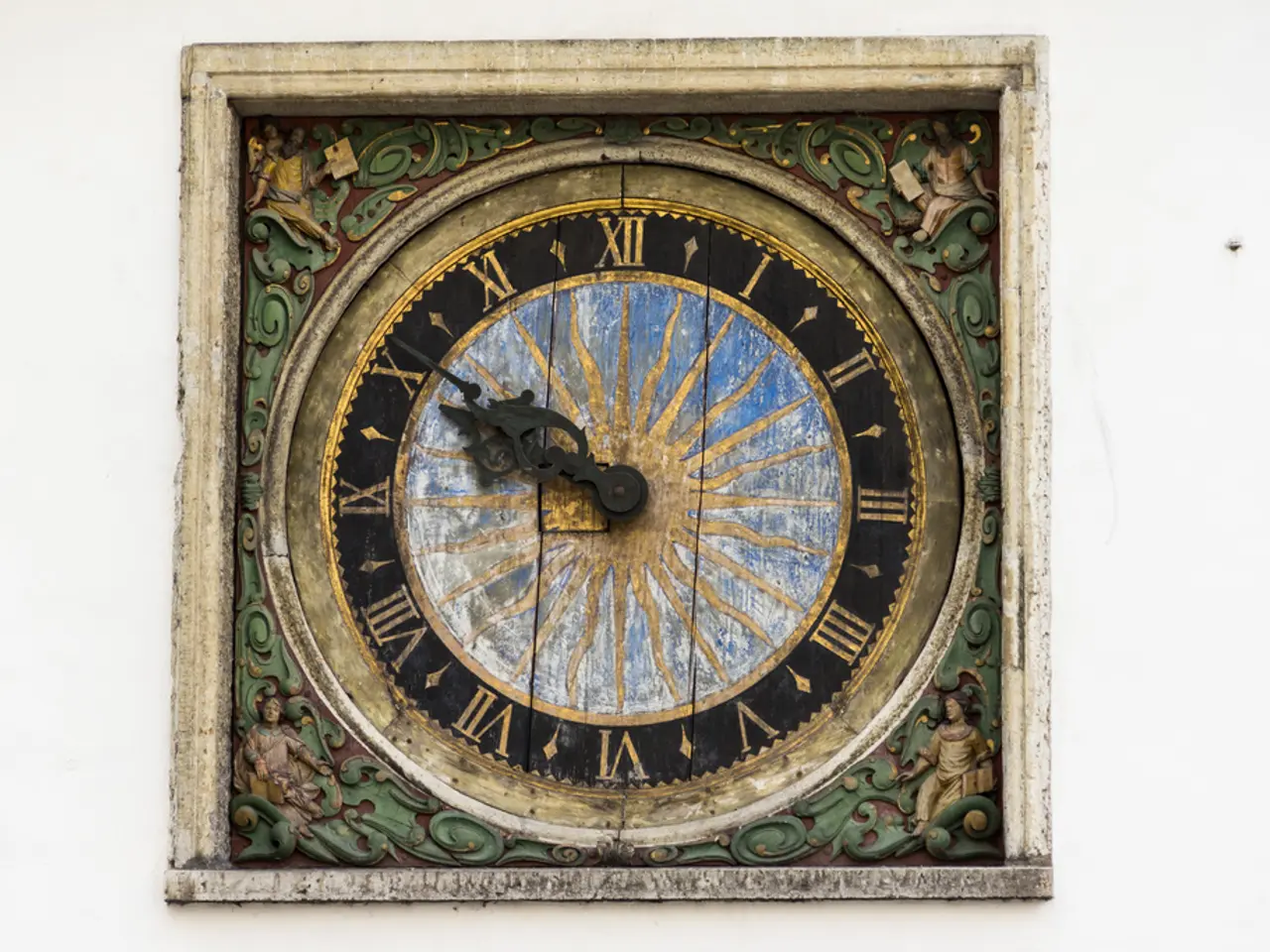Factors Influencing the Valuation of Antique and Vintage Clocks
In the world of antique and vintage clocks, the principle of 'Caveat Emptor' or 'let the buyer beware' holds true, as buyers are expected to purchase at their own risk in the absence of an express warranty.
The condition of a clock plays a significant role in determining its value. A clock in excellent condition is worth more than one in poor condition or with parts missing. For instance, a well-maintained Arthur Pequegnat clock, a common find in antique shops on Vancouver Island, British Columbia, Canada, can fetch a good price.
However, age does not always equate to a higher price. A clock that is 170 years old is not necessarily worth more than one that is 50 years old. The value is influenced by other factors such as craftsmanship, maintenance costs, authenticity, historical importance, market conditions, consumer trends, and sustainability.
Craftsmanship and movement quality are crucial factors. Antique clocks, often handcrafted with considerable skill and time investment, have intricate and durable mechanical movements. The quality and type of movement, such as American clocks over 100 years old versus mid-20th century German clocks, significantly impact the value.
Maintenance and repair costs also play a role. Skilled clockmakers charge several hundred dollars for maintenance, which may affect desirability. Replacement parts for modern movements can be cheaper than repairs, but antique clocks often have parts that are harder to replace, affecting their value.
Authenticity and provenance are essential for high prices. Genuine, verifiable antique or vintage clocks command higher prices, and awareness of knockoffs or reproductions is crucial. Clocks with a unique story, rarity, or historical significance tend to be more valuable.
Historical importance and uniqueness add to a clock's value. There is an increasing consumer desire for pieces with authenticity and a sense of history, which adds to their price appeal. Factors such as rising inflation, cost of living, and tariffs on new goods make antiques and vintage pieces more attractive as economical and sustainable alternatives, potentially raising their value.
Growing appreciation for sustainability and craftsmanship in contrast to mass production contributes to increased demand and thus higher prices for authentic vintage clocks. Clocks that come from a prominent collection and are well cared for are more desirable.
The law of supply and demand also affects the clock market. For example, a 30-hour ogee clock, once commanding prices in the hundreds of dollars, saw prices drop when the internet increased supply. Similarly, most mantel clocks less than 100 years old have little value.
In the clock world, buyers have little or no recourse if goods turn out to be defective, misrepresented, or broken. Therefore, it is essential to research and verify the authenticity of a clock before purchasing.
Subscribing to the latest posts about antique and vintage clocks can provide updates via email. For those interested in the hobby, selecting and purchasing an authentic antique mechanical clock can be a daunting task but can also be a very rewarding experience.
Some clock manufacturers are more desirable than others. For example, Seth Thomas Sonora Chime clocks have good value, while German-made Winterhalder and Hofmeier mantel clocks are worth more than similar American-made Gilbert mantel clocks. Antique clocks from the 1860s and 70s designed by Elias Ingraham are more valuable than common E. Ingraham clocks.
Mechanism type also affects value. Double and triple fusee clocks and pinwheel regulators are worth more than open-spring-driven mantel clocks or modern tall-case weight-driven clocks. Clocks with special provenance, such as a well-documented tall case clock that came from Grover Cleveland's home, may be worth more than others that are the same or similar.
In summary, an authentic antique or vintage clock’s price in 2021 reflects the quality and craftsmanship of its movement, rarity and provenance, maintenance demands, and broader economic and cultural trends favoring sustainability and authentic craftsmanship.
- The principle of 'Caveat Emptor' is prevalent in the antique and vintage clocks market, where buyers are expected to purchase at their own risk.
- A well-maintained Arthur Pequegnat clock, despite its age, can command a good price in antique shops on Vancouver Island.
- Age does not always equate to a higher price in the world of antique clocks, as factors such as craftsmanship, maintenance costs, rarity, market conditions, and consumer trends influence the value.
- Skilled clockmakers charge hundreds of dollars for maintenance, and replacement parts for antique clocks can be harder to find, affecting their overall value.
- Genuine, verifiable antique or vintage clocks are more valuable, especially those with a unique story, rarity, or historical significance.
- The growing appreciation for sustainability and craftsmanship, in contrast to mass production, contributes to increased demand and higher prices for authentic vintage clocks.
- Some clock manufacturers, such as Seth Thomas or Elias Ingraham, are more desirable than others, and the type of mechanism also affects a clock's value, with double and triple fusee clocks and pinwheel regulators being more valuable than open-spring-driven mantel clocks.




